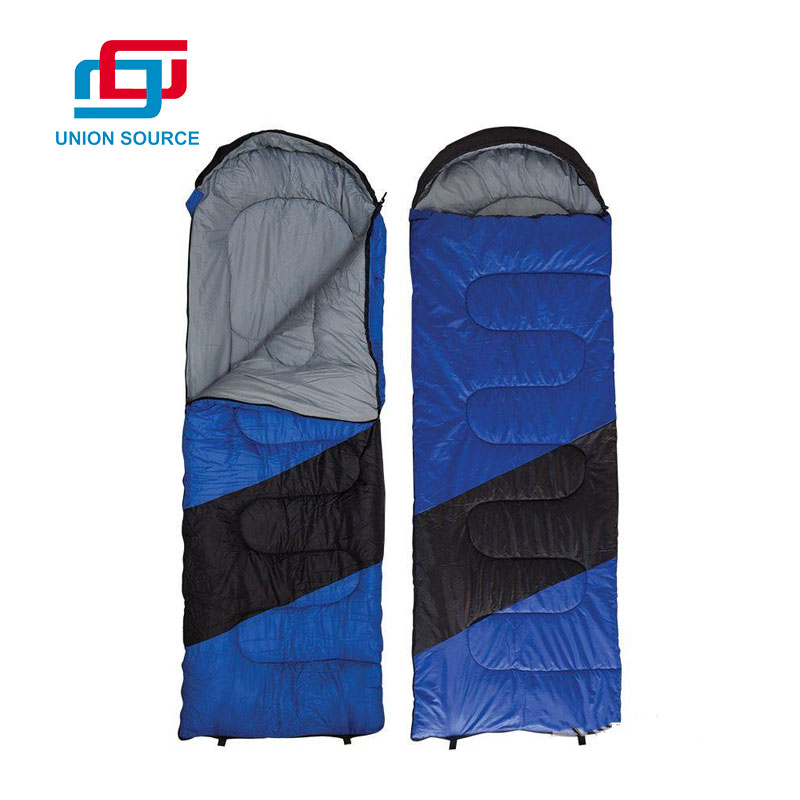When choosing a sleeping bag, several features and considerations should be taken into account
2023-11-23
A sleeping bag is a portable and insulated bedding system designed for outdoor use, particularly during camping, hiking, or other outdoor activities. It provides a comfortable and warm sleeping environment, helping to maintain body heat in various weather conditions. When choosing a sleeping bag, several features and considerations should be taken into account:
1. Temperature Rating:
- Sleeping bags are rated for specific temperature ranges. The rating indicates the lowest temperature at which the bag is designed to keep an average person comfortable. Choose a sleeping bag with a temperature rating appropriate for the conditions you expect to encounter.
2. Insulation Type:
- Sleeping bags are filled with different types of insulation, with the two main categories being down and synthetic.
- Down Insulation: Provides excellent warmth-to-weight ratio and compressibility but can lose its insulating properties when wet.
- Synthetic Insulation: Retains insulation properties even when wet, making it a better choice in damp conditions. However, it is generally heavier and less compressible than down.
3. Shape:
- Sleeping bags come in various shapes, including rectangular, mummy, and semi-rectangular.
- Mummy Bags: Tapered toward the feet, minimizing air space to improve heat retention. Often preferred for cold weather camping.
- Rectangular Bags: Provide more room to move around but may not be as efficient in retaining heat.
4. Size and Fit:
- Ensure the sleeping bag is long and wide enough to accommodate your body comfortably. Some sleeping bags come in different sizes, and it's essential to choose one that fits your height.
5. Weight and Packability:
- Consider the weight and packability of the sleeping bag, especially if you plan on backpacking. Down-filled sleeping bags are generally lighter and more compressible than synthetic ones.
6. Shell and Liner Material:
- The outer shell and inner liner materials affect the sleeping bag's durability, water resistance, and comfort.
- Shell Material: Should be durable and water-resistant.
- Liner Material: Often made from softer materials for comfort.
7. Zippers and Ventilation:
- Look for a sleeping bag with quality zippers that are easy to use and don't snag. Some bags have additional features like draft tubes and adjustable openings to regulate ventilation.
8. Hood and Collar:
- A hood helps to retain heat around the head, and a draft collar prevents warmth from escaping through the neck opening. These features are particularly important in colder conditions.
9. Sleeping Bag Season Rating:
- Sleeping bags are often categorized by season:
- Summer Bags: Designed for warmer temperatures.
- 3-Season Bags: Suitable for spring, summer, and fall.
- Winter Bags: Intended for cold winter conditions.
10. Gender-Specific Designs:
- Some sleeping bags are designed specifically for men or women, taking into account differences in body shape and temperature regulation. Women's bags may have additional insulation in critical areas.
11. Ease of Cleaning:
- Check whether the sleeping bag is machine washable or requires special care. Some sleeping bags come with removable liners for easier cleaning.
12. Brand and Reviews:
- Consider purchasing from reputable brands known for producing high-quality sleeping bags. Reading customer reviews can provide insights into the performance and durability of a specific sleeping bag.
13. Budget:
- Sleeping bags come in various price ranges. Consider your budget and choose a sleeping bag that offers the features and quality you need within that range.
Choosing the right sleeping bag is crucial for a comfortable and enjoyable outdoor experience. Whether you're camping in warm summer conditions or braving the cold of winter, a well-chosen sleeping bag will contribute significantly to a good night's sleep in the great outdoors.



